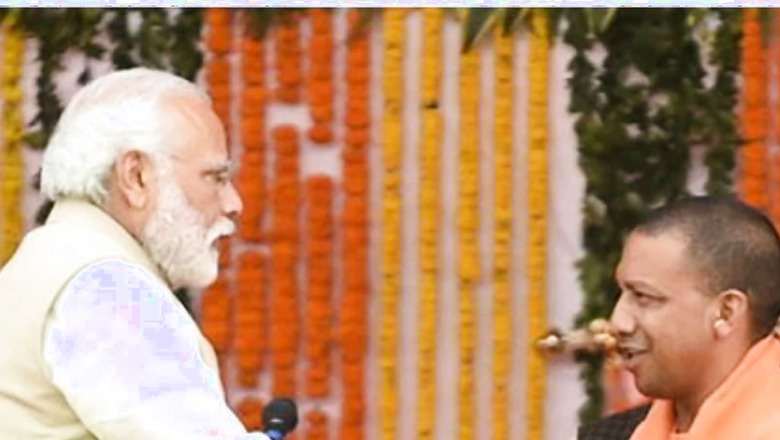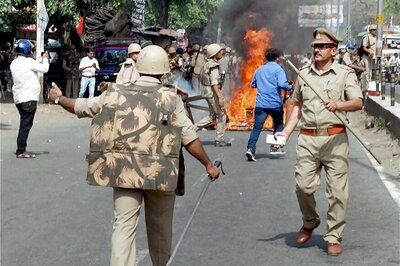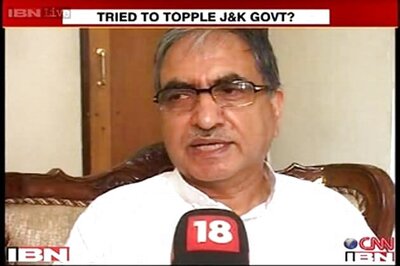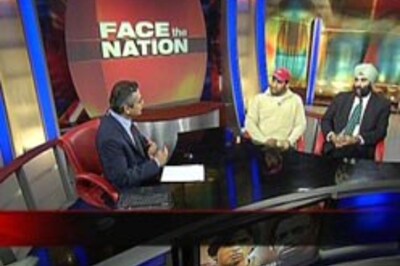
views
With just six months left before the crucial assembly elections in Uttar Pradesh, the ruling Bharatiya Janata Party is all set to launch a mega campaign in the state. This comes after the party set its house in order and waded through all speculation of a conflict between its leaders in the state and the Centre. With UP chief minister Yogi Adityanath getting an unprecedented endorsement from Prime Minister Narendra Modi during the PM’s recent visit to Varanasi, the message of unquestioned unity and the Centre’s firm faith in the CM’s leadership has been proven beyond doubt. With its house in perfect order, it’s now time for the BJP to focus on the battle ahead.
For the party that is subject to a certain degree of anti-incumbency, questions over the management of the Covid pandemic and the perception of discrimination against upper-caste Brahmins and the most backward classes are the immediate challenges to deal with. These are the issues that BJP leaders feel will be most intensely used as weapons by the opposition forces.
BJP strategy decoded
For the ruling party facing a challenge from strong regional forces, especially the Samajwadi Party and to an extent the Bahujan Samaj Party, the strategy planned is more about focusing on the claimed good governance, welfare schemes and rejuvenating the organisation’s aam karyakarta (common cadre) by firing up his moral. This strategy of organisational revival with focus on the last-mile workers and taking the government’s flagship schemes to the public lies at the core of the BJP’s poll ploy.
Reviving organisational strength
The BJP boasts of a well-structured and grassroots organisation, going down to the booth levels. The party claims to have 11-member booth committees across villages and towns in almost all the 75 districts of UP. It is this strong organisational presence that has helped the party with micro-level electoral management in the past three polls, starting from the 2014 general elections.
A senior BJP leader said, “Unlike the key opposition parties that fail to capitalise on the popularity of their leaders because they lack the organisational strength to convert the goodwill into popular votes, the BJP has a strong capacity to do so.”
The focus, therefore, is on reviving and rejuvenating the last-mile worker, often referred to as a ‘panna pramukh’. It’s the panna pramukh, who is in charge of a few pages of the voter list in any given area for a party, whose conduct assumes great significance in the electoral season. This person is the crucial link between the common voter and the party. No doubt, an upbeat panna pramukh can make a lot of difference and give an edge to a party amid a fierce electoral battle.
BJP state vice president and legislator Vijay Bahadur Pathak says, “The BJP is the party of karyakartas (workers); from the topmost leadership to the grassroots worker, everyone has an important role to play in propagating the party’s ideology and our government’s good work. Ahead of the polls, our connect with the people will further intensify.”
It is this aim of rejuvenating the organisation’s capacities and shedding of inertia that has led to a series of meetings in recent days, some of them headed by the party’s national president JP Nadda himself. The focus had also been on sorting out the issues between the government and the party.
Organisation as a two-way communication system
In a move that clearly speaks of pragmatism and a desire to overcome the odds suffered during the recent pandemic times, the party has also come up with several novel ideas. Some new frontal wings have been created to deal especially with problems of the street and roadside vendors as well as migrant labourers.
The idea is to reach out to those sections of society who have been hit the hardest during the pandemic. The new frontal organisations are tasked with easing out the anger against the government and being the platform for winning back the annoyed voters.
The BJP’s state spokesperson Naveen Srivastava says, “Within August, all seven of the party’s key frontals and around 45 other subsidiary wings focusing on different sections of the society will be fully constituted. Some new sections like Street Side Vendor Prakoshth and Migrant Labourer Front have also been created. These fronts will work as a mechanism of two-way communication between the party-government and the people.”
Top guns in UP
The other significant aspect of the BJP’S poll strategy involves the judicious use of the big guns. So, Prime Minister Narendra Modi, union home minister Amit Shah, defence minister Rajnath Singh and party president JP Nadda will be increasingly seen in the state in the months ahead.
Starting from August, this battery of top leaders will become more active in the state. While the Prime Minister’s three visits to the state in August itself are being worked out, Amit Shah will be in Lucknow on August 1 to lay the foundation stone for the State Institute for Forensic Sciences.
In the coming month, the Prime Minister is expected to inaugurate the newly constructed medical colleges and also the ambitious Poorvanchal expressway on which more than 90 per cent of work is reportedly complete. The PM is also expected to lay the foundation stone for the construction of the Jewar international airport.
JP Nadda is also slated to be in UP on August 8 and 9 to hold key meetings with party leaders. In the days to come, different geographical regions of the state will be seeing such visits of top BJP leaders. No doubt these events will be showcased as the government’s commitment on the development front. Electorally speaking, they not just build a better perception in the people’s court, they also help re-energise the party worker.
Read all the Latest News, Breaking News and Coronavirus News here.


















Comments
0 comment